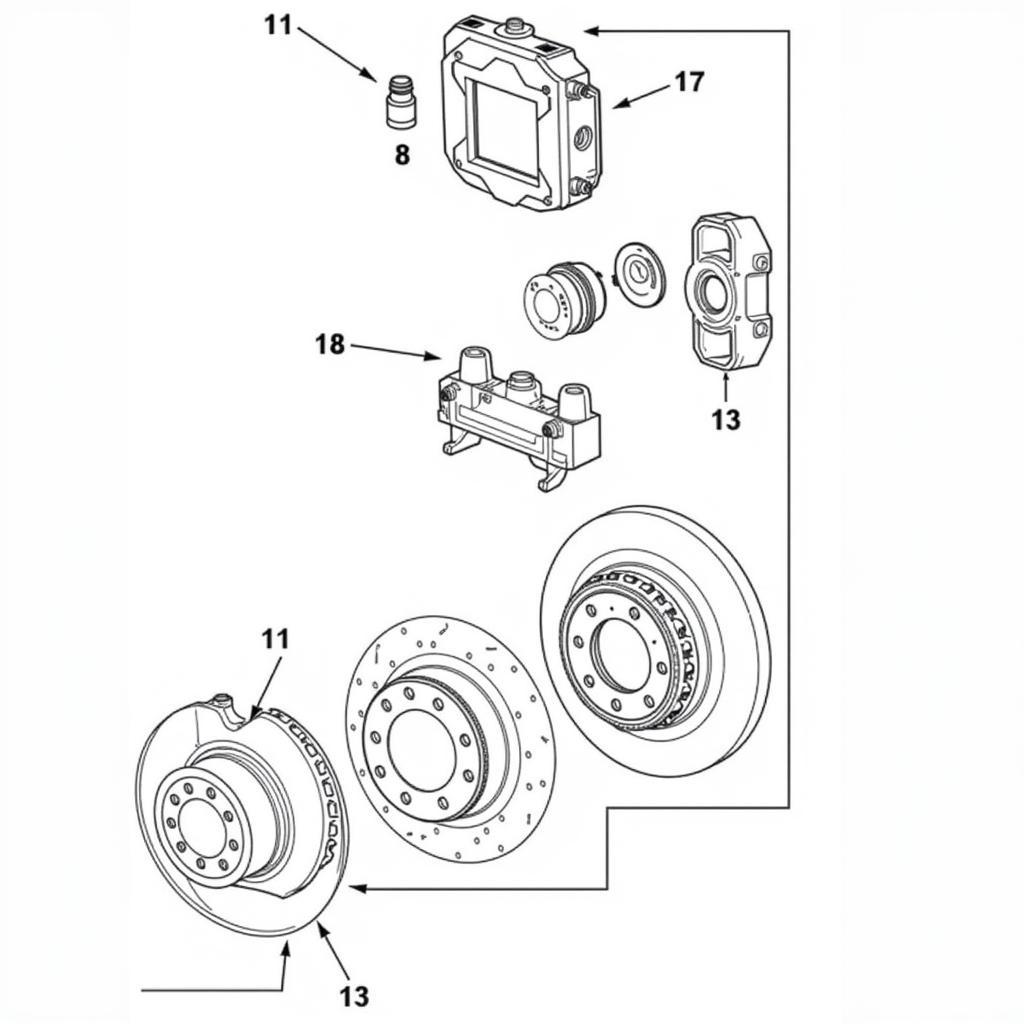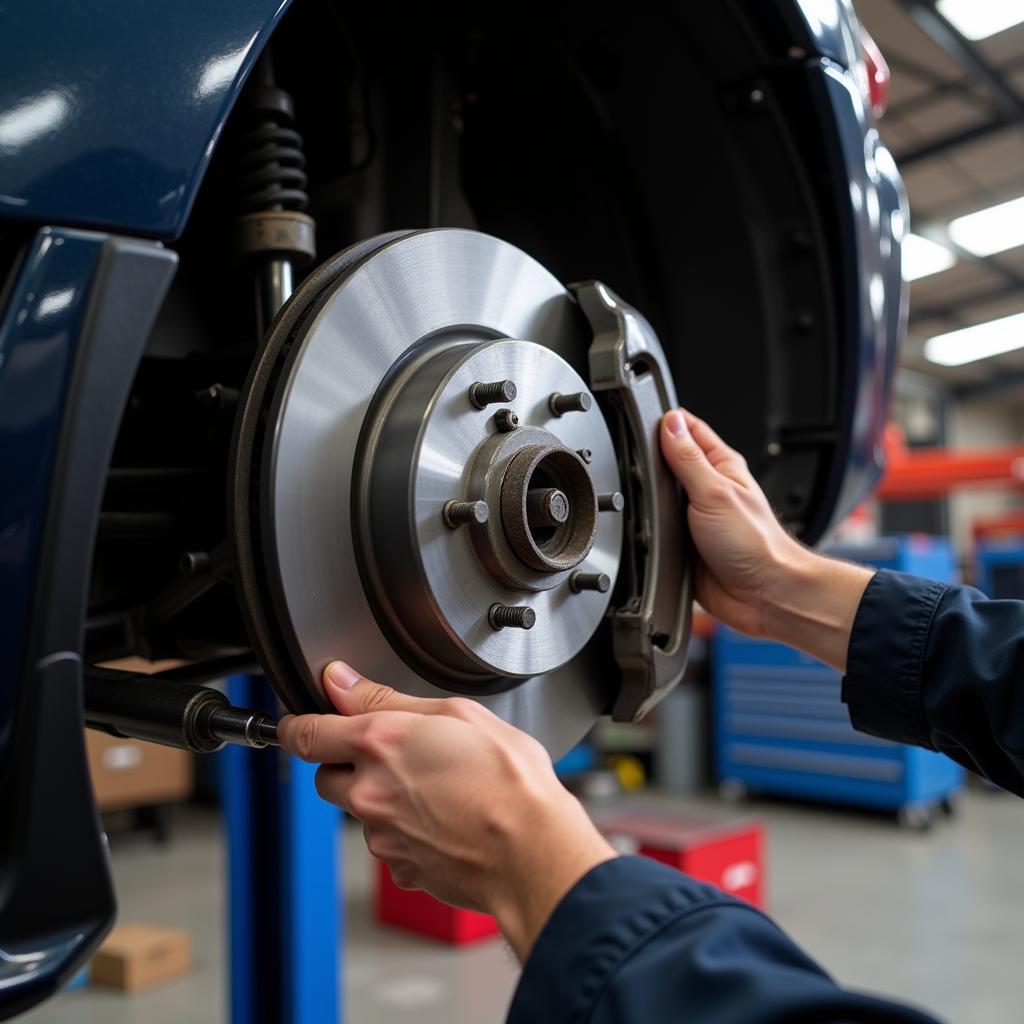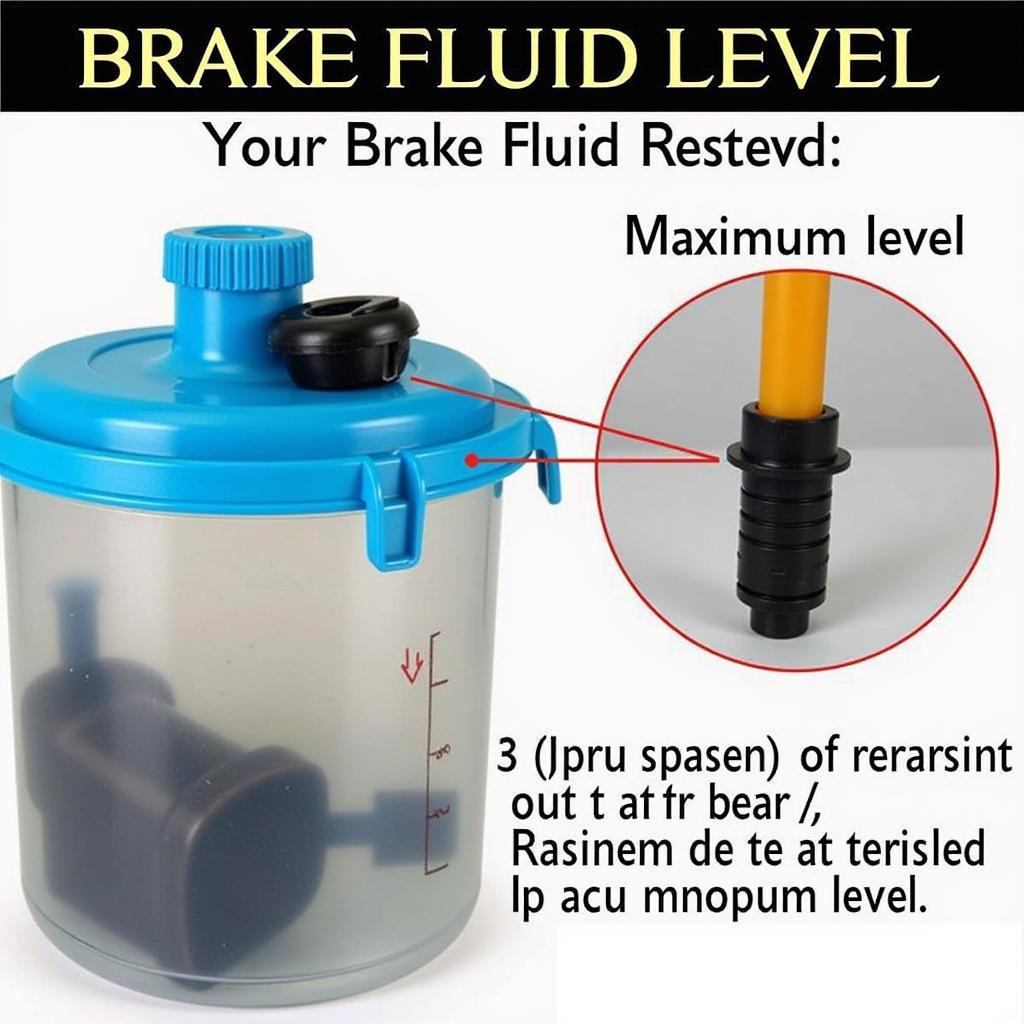The brake warning light on your 2007 Ford F150 dashboard is a crucial safety feature. When illuminated, it signals a potential problem within your truck’s braking system that requires immediate attention. Ignoring this warning could lead to decreased braking performance and increase the risk of an accident. This comprehensive guide will explore the common causes behind a persistent brake warning light in a 2007 Ford F150 and provide potential solutions to help you get back on the road safely.
Understanding Your F150’s Brake System
Before delving into the causes, it’s essential to have a basic understanding of how your F150’s braking system operates. The system is comprised of several key components working in harmony to slow down and stop your truck:
- Hydraulic System: This system utilizes brake fluid to transmit the force applied to the brake pedal to the wheels.
- Master Cylinder: Acting as the heart of the hydraulic system, the master cylinder pressurizes the brake fluid when you press the brake pedal.
- Brake Lines: These metal tubes carry the pressurized brake fluid from the master cylinder to the calipers or wheel cylinders at each wheel.
- Brake Calipers (Disc Brakes): Found on the front wheels of most F150s, calipers house pistons that push the brake pads against the brake rotors, creating friction to slow the vehicle.
- Wheel Cylinders (Drum Brakes): Some F150 models may have drum brakes on the rear wheels. Wheel cylinders operate similarly to calipers, pushing brake shoes against the drums to generate braking force.
 2007 Ford F150 Brake System Diagram
2007 Ford F150 Brake System Diagram
Common Causes of a Constant Brake Warning Light
Several factors can trigger the brake warning light in your 2007 Ford F150. Here are some of the most prevalent:
1. Low Brake Fluid Level
This is often the most straightforward culprit. Brake fluid is essential for transmitting hydraulic pressure, and a low fluid level can significantly affect braking performance. Over time, brake pads wear down, requiring more fluid to operate effectively.
How to check:
- Locate the brake fluid reservoir under the hood. It’s typically a translucent plastic container with a black cap.
- Check the fluid level against the “Min” and “Max” markings on the reservoir.
Solution:
If the fluid level is low, carefully add the correct type of brake fluid recommended in your owner’s manual. Remember to inspect for any leaks in the brake lines or connections that may have caused the low fluid level.
2. Worn Brake Pads
Brake pads are designed to wear down over time. When they become too thin, the brake warning light is activated to alert you to their replacement.
How to check:
Visually inspect the brake pads through the spaces between the wheel spokes. If the pad material is less than ¼ inch thick, it’s time for new brakes.
Solution:
Have your brake pads replaced by a qualified mechanic. It’s recommended to change both pads on the same axle simultaneously, even if only one appears worn.
3. Faulty Brake Light Switch
The brake light switch is a small sensor positioned near the brake pedal. It signals the brake lights to illuminate when the pedal is depressed. A malfunctioning switch can confuse the vehicle’s electrical system, triggering the brake warning light.
Solution:
A faulty brake light switch will require replacement. This is a relatively inexpensive repair that most mechanics can handle.
4. ABS Issue
Modern F150s are equipped with Anti-lock Braking Systems (ABS), designed to prevent wheel lockup during hard braking. If the ABS module detects a problem with the system, it can illuminate the brake warning light.
How to check:
An illuminated ABS warning light, in addition to the brake warning light, usually indicates an ABS-related issue.
Solution:
Diagnosing ABS problems requires specialized equipment. It’s best to have a qualified technician diagnose and repair any ABS-related faults.
5. Parking Brake Engaged
While seemingly obvious, sometimes the simplest answer is the right one. If the parking brake is even slightly engaged, it can trigger the warning light.
Solution:
Make sure the parking brake is fully released. If the light remains illuminated, there may be an issue with the parking brake sensor.
When to Seek Professional Help
While some brake warning light issues can be addressed with simple DIY fixes, others require professional attention. If you experience any of the following, seek help promptly:
- Spongy or soft brake pedal: This indicates a potential issue with the hydraulic system, such as air in the brake lines.
- Grinding or squealing noises when braking: This usually signals worn brake pads needing immediate replacement.
- Pulling to one side while braking: This could indicate a problem with the brake calipers, brake lines, or uneven brake pad wear.
- You are unsure about any aspect of brake repair: Brakes are critical for safety. If you’re not comfortable working on them yourself, always consult a qualified mechanic.
Keeping Your Ford F150 Brakes in Top Condition
Regular maintenance is essential to keep your F150’s braking system in optimal condition. Here are some preventative measures:
- Regular Brake Inspections: Have your brakes inspected at least once a year, or more frequently if you drive in harsh conditions.
- Flush Brake Fluid: Brake fluid deteriorates over time and absorbs moisture. It’s crucial to have it flushed and replaced according to your owner’s manual recommendations.
- Don’t Ignore Warning Signs: Address any unusual noises, pedal feel, or dashboard warning lights promptly to prevent further damage and ensure your safety.
 Mechanic Inspecting Brake System
Mechanic Inspecting Brake System
Conclusion
The brake warning light on your 2007 Ford F150 should never be ignored. By understanding the common causes and taking the appropriate steps for diagnosis and repair, you can help ensure the safety and longevity of your truck’s braking system. Remember, when in doubt, always consult a qualified mechanic for expert advice and assistance.

